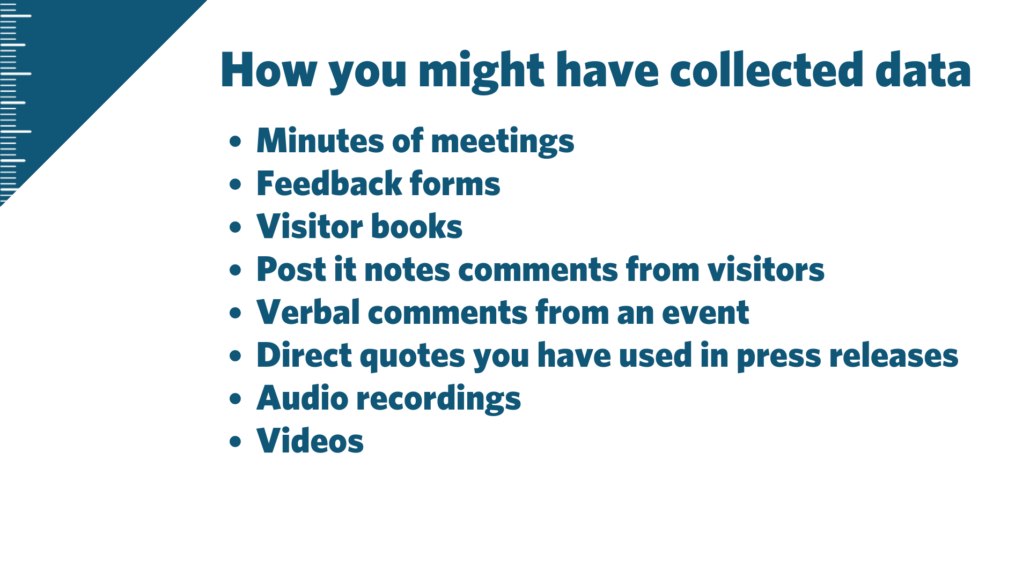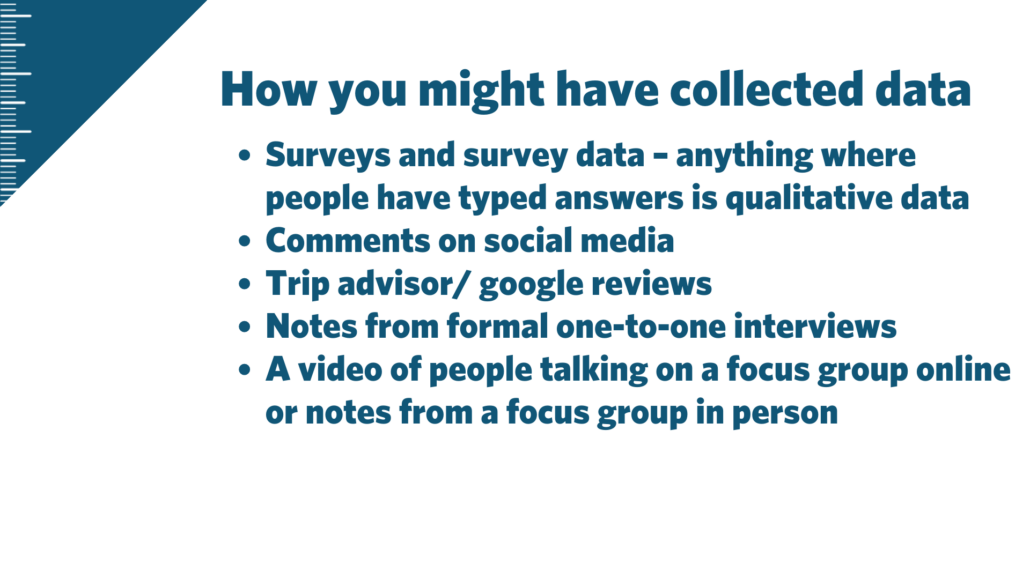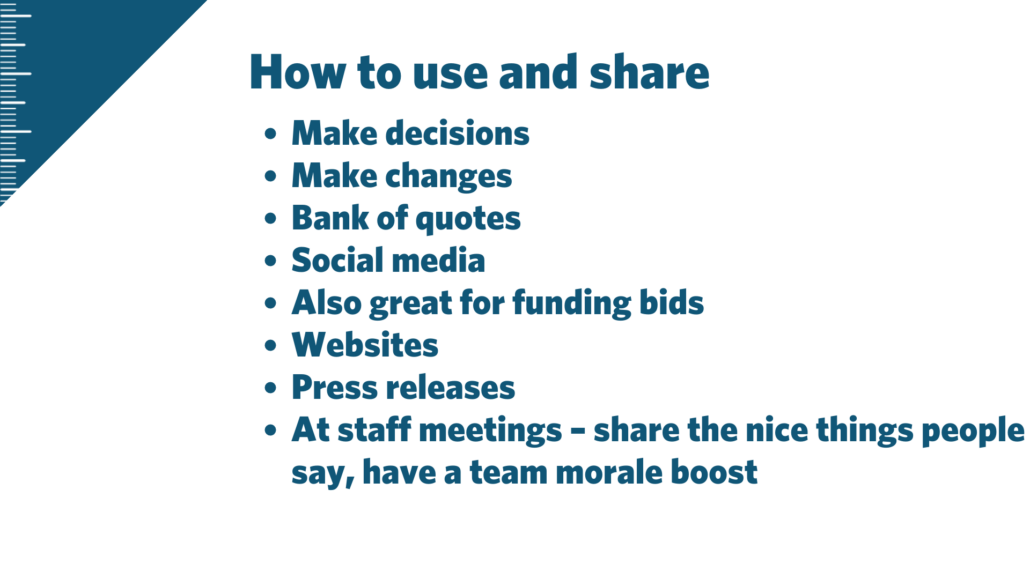Learning about data; Working with qualitative data
From time to time, we share a director’s blog post, where we share some learning about how to use your data (information) better. This is a post all about how to use qualitative data, that’s the information that is made up of words rather than numbers.
The chances are that your organisation already has a bank of this data but it may not be well organised and easily accessible. Below is a list of some of the many ways you might have collected qualitative data, possibly without realising it.


How credible is your qualitative data?
There is a distinction between primary and secondary data and it’s important to understand what you have collected as the credibility differs between the two. Primary data is more credible and robust. It is the data that people told you or have written themselves. Secondary data is that which is overheard in discussion or something that someone has heard and told you about.
To check the credibility of your secondary data, you can apply the Rule of 3. If you’ve heard it from 3 different places or if it’s come from 3 different people independently then it can be considered as credible and representative of a thought or opinion.
How to make the qualitative data more usable?
We use word or phrase frequency analysis to evaluate our qualitative data to look for patterns of frequency of words to identify common themes. This can be done online using free tools, like this one, and they just count the words for you. We often use the top 10 words or phrases. You can also use the ratio of positive to negative words that are used or how far down the feedback the first negative word appears. Using these methods helps to quantify data and make it more digestible and can be used in marketing or to track changes over time.
Mind maps can be useful to illustrate and develop on the themes identified. You can just draw these freehand to have a look at what the main themes are.
Word clouds provide a visual representation at a glance of the qualitative data and this is also a resource that can be sourced freely online. The most common words appear the biggest in the cloud, making this data easier for the reader to understand visually.
Top tip – try to be objective, it can be hard to hear negative comments but it is how we improve and know what to fix, and they’re often in the minority compared to positive comments.
How to use and share qualitative data?
This data can be used in many different ways:

We also use qualitative data to create case studies which illustrate people’s journeys and direct engagement. Case studies can be shared at board level and to show case your project’s work for marketing purposes. Case studies appeal to a wide audience and are particularly useful in attracting funders as voices are recorded and reflected in these studies.
In our experience as evaluators, a case study from a project that we evaluated got shared with funders (Green Recovery) who sent it on to The National Lottery Heritage Fund who then sent it on to the Department of Work and Pensions. Case studies are impactful in that they record real voices and can attract publicity and raise awareness of change.
If all of this sounds like too much work and you don’t have time, get in touch. We are happy to have a chat about your individual requirements and to see how we could help.